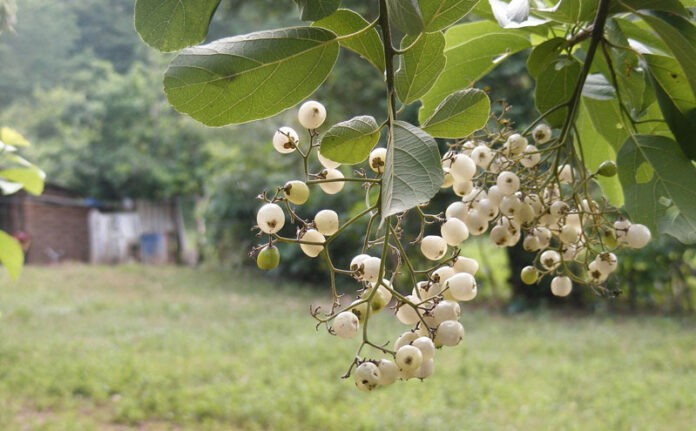Coccoloba caracasana commonly known as Papaturro is actually a tree in the family Polygonaceae (Buckwheat family). The plant is native to Mexico and Central America. This tree ranges from El Salvador to Panama and northern South America, where it is most common in the Pacific regions.
Its name is derived from the Greek “kokkolobis” because of the similarity of the bunches of its fruits with those of a kind of grape (Vitis). Economically, the species is useful for its edible fruit. The wood is used as firewood and for poles. The foliage is ornamental and hung for shade.
Pages of Contents
Plant Description
Papaturro is a small to medium-sized, often multi-stemmed evergreen tree that grows about 6–18 m (20–60 ft.) tall often with multiple trunks and puberulent to glabrescent stems.
The plant prefers sandy, loose and wet soil and may be found along rivers. Leaves are alternate, simple, broad-oblong, glabrous, leathery, 20–35 cm (8–14 in) long rounded to truncate to sub cordate at the base.
The flowers are small, greenish and fragrant, arranged in racemose inflorescences gathered in terminal and lateral spikes having delicate aroma that attract bees and other insects.
Fruits are achenes with a whitish to translucent, sweet juicy edible, pulp with a grapelike consistency. The outer, edible parts of the fruit consist of the former perianth, which becomes fleshy. An edible fleshy fruit is used to make jams. Its bunches are similar to those of grapes. It reproduces easily by means of stakes and seeds.
History papaturro
The tree is native to Mexico and Central America, where the tree occurs mainly along the Pacific coast, and in northern South America. It is rarely cultivated outside its natural range. The papaturro is strictly tropical, preferring a climate with a distinct dry season and growing on sandy soils, often along riverbanks. The tree is often cultivated for its beautiful foliage and as a shade tree.
Culinary Uses of papaturro
- The sweet, somewhat insipid fleshy pulp surrounding the seed is usually eaten out of hand.
- During the dry season in Central America, you can often see children collecting the fruits from wild trees for consuming.
Other facts
The foliage is used as an ornamental and is hung for shade.
The wood is used for fi¬rewood and as fence poles.
It is used as a shade tree which improves the temperature of the place and benefits the plant species that are under it.



